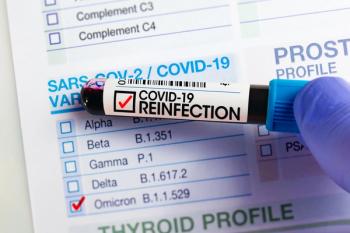
Legislation to Play Significant Role in Drug Pricing Across Specialty Pharmacy
Although the specialty industry brings a positive impact across quality and continuity of care initiatives, the administration of specialty drugs is highly complex with the number of new therapies and payer requirements.
As utilization and drug spending continue to rise, health care providers are looking to resolve key questions that address drug pricing and biosimilar implementation in
Hospital and health systems saw nearly 20% growth in the specialty drug market in 2018, according to Becker’s Hospital Review.2 The diversity of specialty pharmacies has resulted in variability across all operational areas, including tracking adherence, educating patients, dispensing medications, and ensuring drug safety.3
However, although the specialty industry has had a positive impact on health systems’ quality and continuity of care initiatives, the administration of specialty drugs is challenging and highly complex given the number of new therapies and payer requirements.
As a pharmacist, your insight has a direct effect on patient outcomes. Help drive medicine forward with your opinions. Participate in a quick survey of OTC products for a chance to win a $1,000 Visa gift card. Vote now by clicking here:
According to Ron Lanton, III, Esq, principal of Lanton Law and biologics committee chair of the New York State Bar Association, policymakers on the federal level understand that the issue of drug pricing needs to be resolved but they are having a hard time coming to an agreement on how this reform should be done.
The Drug Price Conundrum
Due to the fact that the legislative session has recently begun in many states and in Congress and that it is an election year, it is difficult to determine whether there will be a unifying drug-legislative solution for drug prices.
However, California’s Governor Gavin Newsom (D-CA) has recently proposed that California become the
According to Lanton, a manufacturer could leverage its influence over smaller states to stop legislation such as Governor Newsom’s from advancing. However, due to its size and the fact that its policies may influence other state legislatures, California may be a harder market for a manufacturer to confront.
“I [have to] question as to whether California’s efforts would further drive down an already deflated generic drug market and whether California would be able to determine how much it will charge for generics once manufacturing costs, such as raw materials, are concerned. Not to mention how much this is going to cost since that remains unknown at this point in time,” Lanton explained to Directions in Specialty PharmacyTM.
Although the proposal marks the first state-wide attempt to lower prescription drug prices, there have been attempts within federal legislation to corral drug prices. The Trump administration recently attempted to lower drug costs through its Blueprint to Lower Drug Costs, and the FDA has recently been an advocate for greater generic and biosimilar utilization.
“To date, there has been no silver bullet to deal with rising prescription drug costs. Notwithstanding whether I agree with this plan, I applaud California in trying to solve a problem that refuses to go away quietly,” Lanton said.
Biosimilar Implementation
Specialty drugs, with nearly 700 therapies currently under development for treatment areas such as cancer, hepatitis C virus, HIV, autoimmune disorders, and multiple sclerosis, are expected to claim 9 of the top 10 spots among bestselling drugs in 2020.3 Although specialty drugs have been hallmarked as important treatment options for patients with cancer or other complex diseases, there can be issues surrounding access and affordability.
The cost of specialty medications and the increased adoption of high-deductible health plans have placed a higher financial burden on patients. As out-of-pocket costs increase, including insurance denials, patients are more likely to abandon their treatment plans.4
Biosimilars are potentially more affordable specialty medications for patients with complex disease states. According to Managed Health Executive, biosimilars could bring approximately $250 billion in savings by 2024.3
Pending legislation may have a large impact on biosimilar implementation across the specialty pharmacy landscape. There are several bills that Lanton singled out for the 2020 year1:
- HR 4597 Acting to Cancel Co-pays and Ensure Substantial Savings for Biosimilars (ACCESS) Act would eliminate a patient’s co-pay for a biosimilar if they normally would pay full cost of a biologic drug under Medicare Part B. The bill seeks to drive down medical costs by increasing access to lower-cost biosimilar drugs and give Americans more treatment options.
- HR 4629 Star Rating for Biosimilar Act would require the Secretary of Health and Human Services to add a new set of measures to the 5-star rating system under the Medicare Advantage program in order to encourage increased access to biosimilar biological products.
- HR 4913 would require Medicare prescription drug plan (PDP) formularies to include covered generic drugs and biosimilars for which the wholesale acquisition cost is less than that of the reference (ie, brand-name) product. PDP sponsors must also establish specific cost-sharing tiers that apply lower cost-sharing requirements for such covered generic drugs and biosimilars as compared to those for brand-name products. The bill also prohibits PDP sponsors from instituting certain requirements relating to access to such covered generic drugs and biosimilars that are more restrictive than those for brand-name products (eg, prior authorization requirements).
- HR 2375 would prohibit prescription drug companies from compensating other prescription drug companies to delay the entry of a generic drug, biosimilar biological product, or interchangeable biological product into the market.
- S 1681 proposes to educate health care providers and the public on biosimilar biological products. Under this bill, the Secretary shall establish, maintain, and operate a website consisting of educational materials regarding the meaning and use of biosimilar biological products and interchangeable biological products.
Affordable Care Act (ACA) Transition
On March 23, 2020, the life sciences industry will undergo “the transition,” according to Lanton. Currently, the FDA has and will continue to regulate biologics, but historically the agency regulated biologics as drugs under the Food, Drug and Cosmetic Act instead of as products licensed under the Public Health Service (PHS) Act.
“In order to bring all biologics under the same legal and regulatory system, the Biologics Price Competition and Innovation Act of 2009 found in the ACA included the ‘Deemed to be a License’ provision,” Lanton said.
This meant that 10 years after enactment, on March 23, 2020, applicable biologics will automatically be deemed biologics licensed under the PHS Act. Unfortunately, the statute did not provide instructions to the FDA on how to do this, meaning the agency will decide on which products transition and how, according to Lanton.
“This basically means no more new drug applications or abbreviated new drug applications for select biologics, only biologic license applications of the 351(a) and 351(k) varieties. Also, not only will they be categorized as biologic[s], but they will be subject to the biosimilar, not generic competition. Specifically, drugs [to] be transitioned are insulins and other naturally occurring proteins, such as hyaluronidase, human growth hormones, and menotropins,” Lanton said.
Reference
- Lanton, Ron, III, Esq. Interview with Pharmacy Times [email]. Accessed February 11, 2020.
- 5 Trends Health System Pharmacies Can Expect in 2020. Becker’s Hospital Review. Published December 9, 2020. https://www.beckershospitalreview.com/pharmacy/5-trends-health-system-pharmacies-can-expect-in-2020.html. Accessed February 12, 2020.
- Biologics Build Oncology Drug Pipeline. Managed Healthcare Executive. Published November 1, 2019. https://www.managedhealthcareexecutive.com/news/biologics-build-oncology-drug-pipeline. Accessed February 12, 2020.
- Galante, Dominic. Accreditation Explosion Among Top Specialty Pharmacy Trends. J Clin Pathways. 2018;4(7):35-38. doi:10.25270/JCP.2018.09.00037. Accessed February 12, 2020.
Newsletter
Stay informed on drug updates, treatment guidelines, and pharmacy practice trends—subscribe to Pharmacy Times for weekly clinical insights.


















































































































































































































